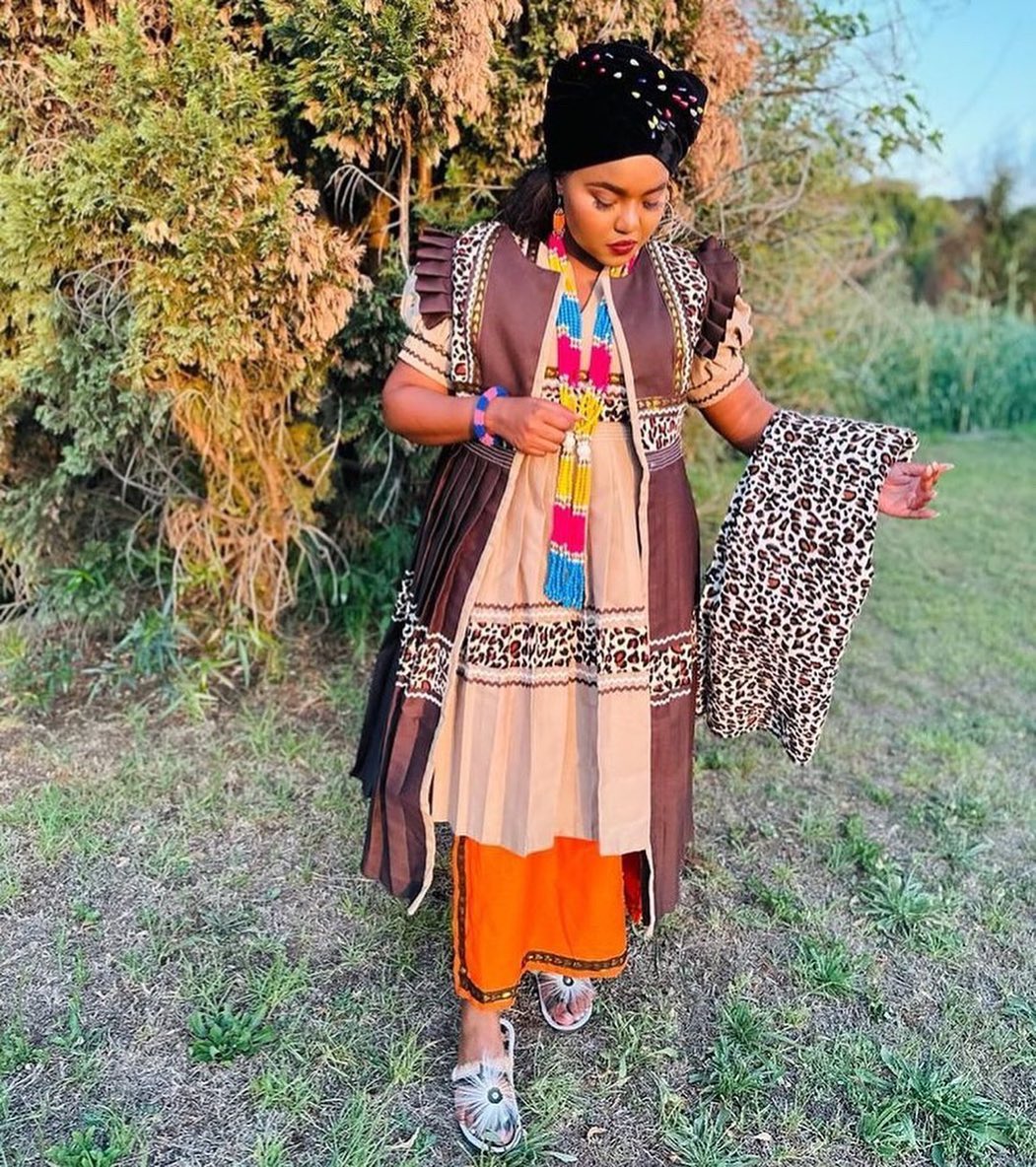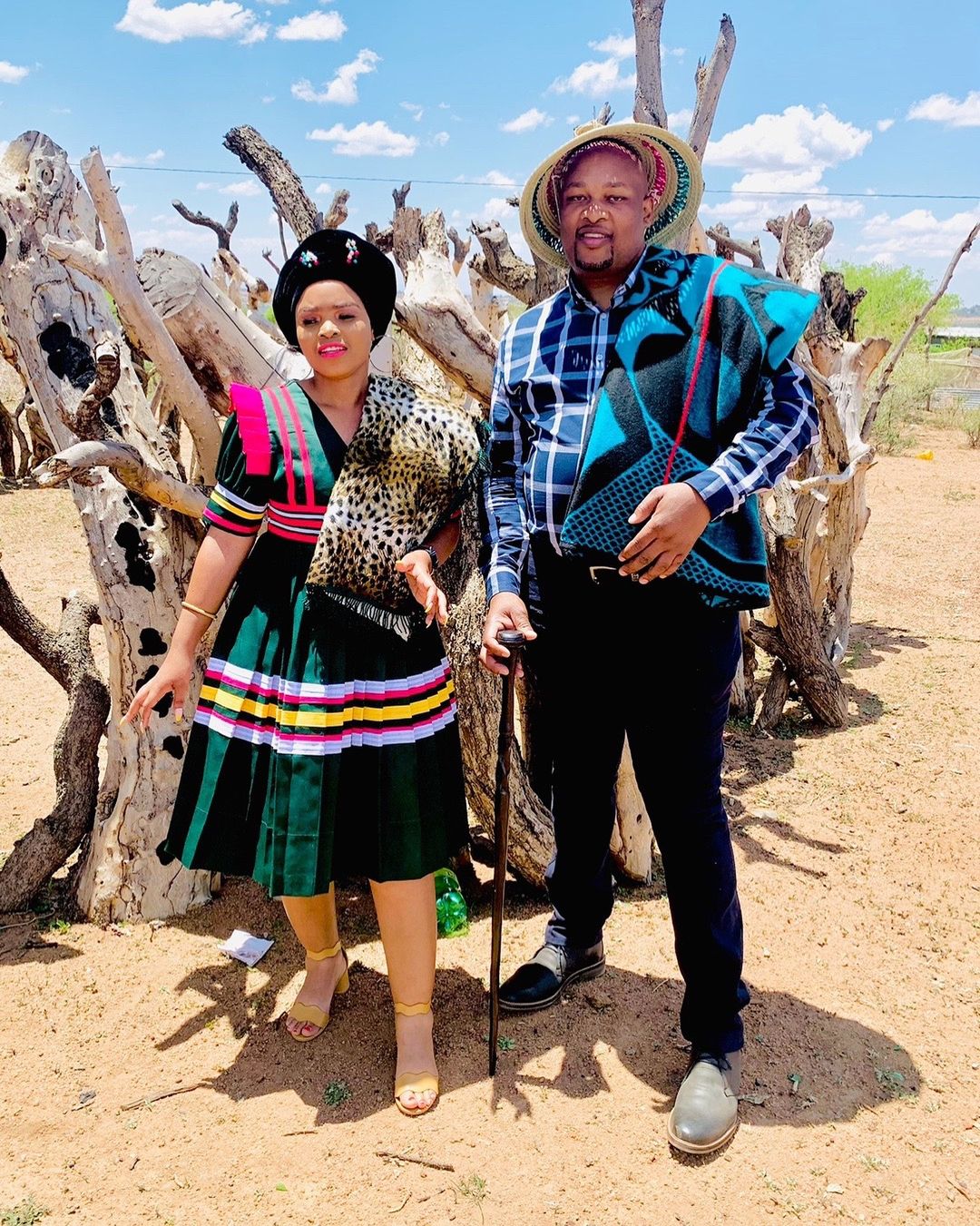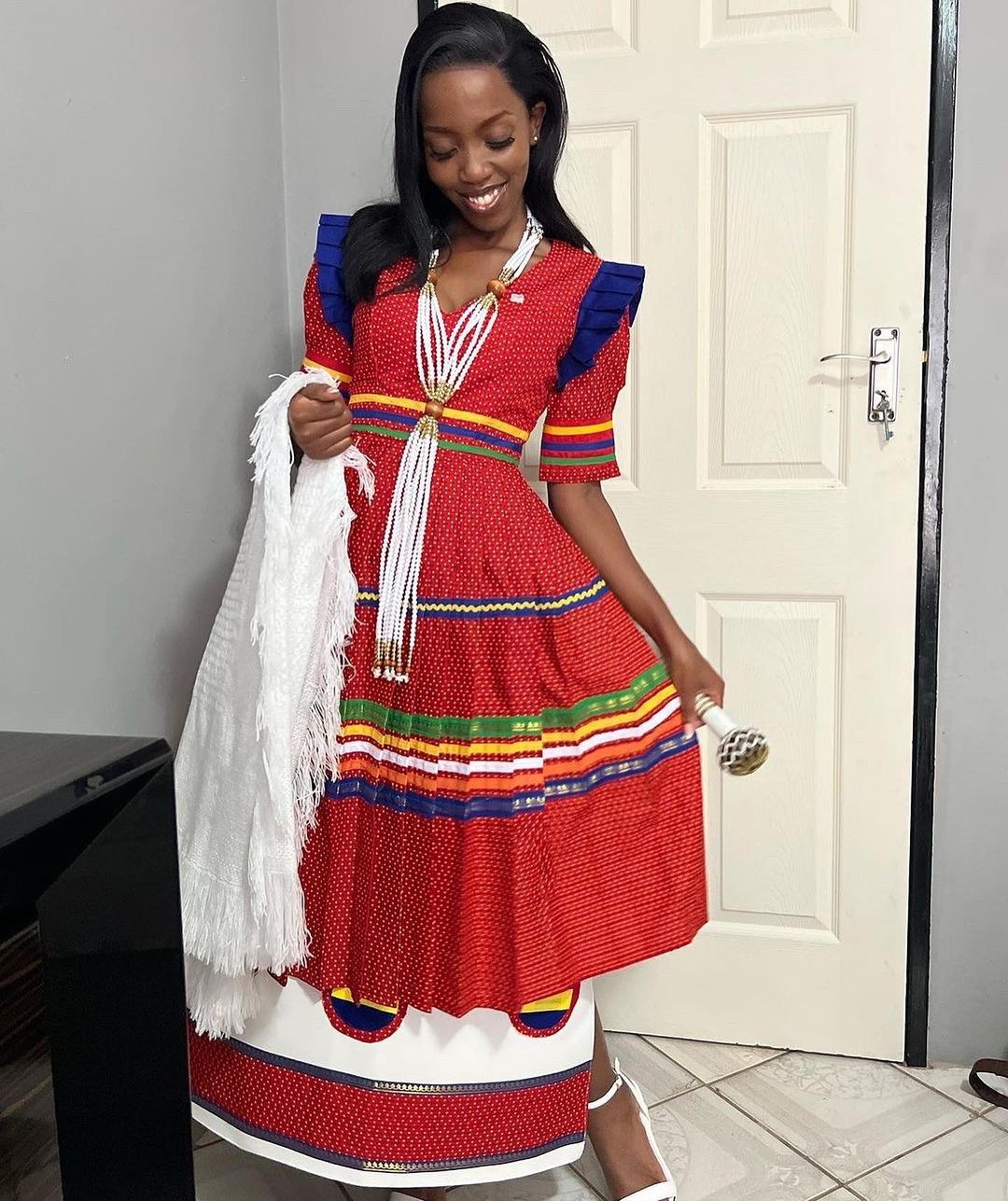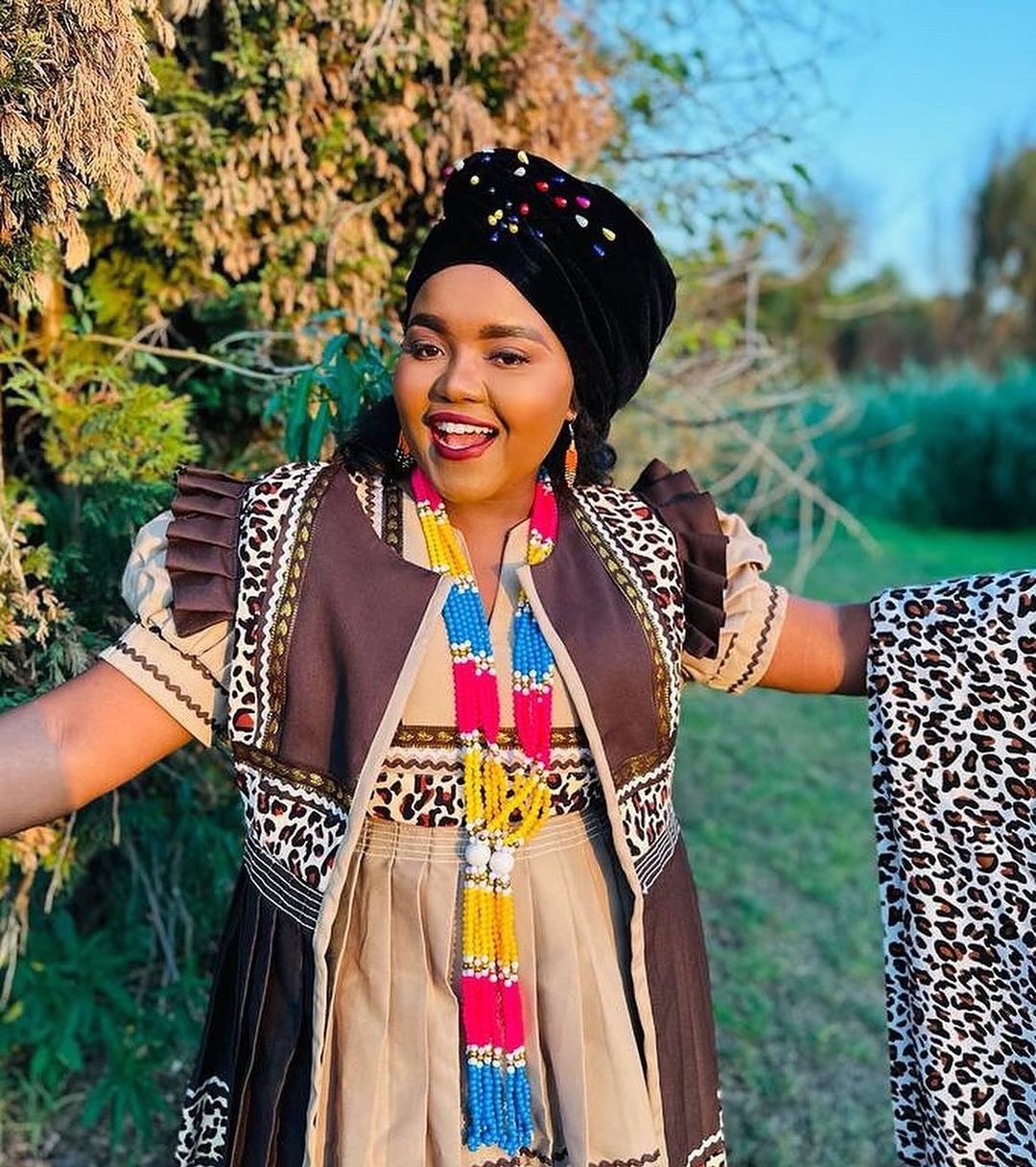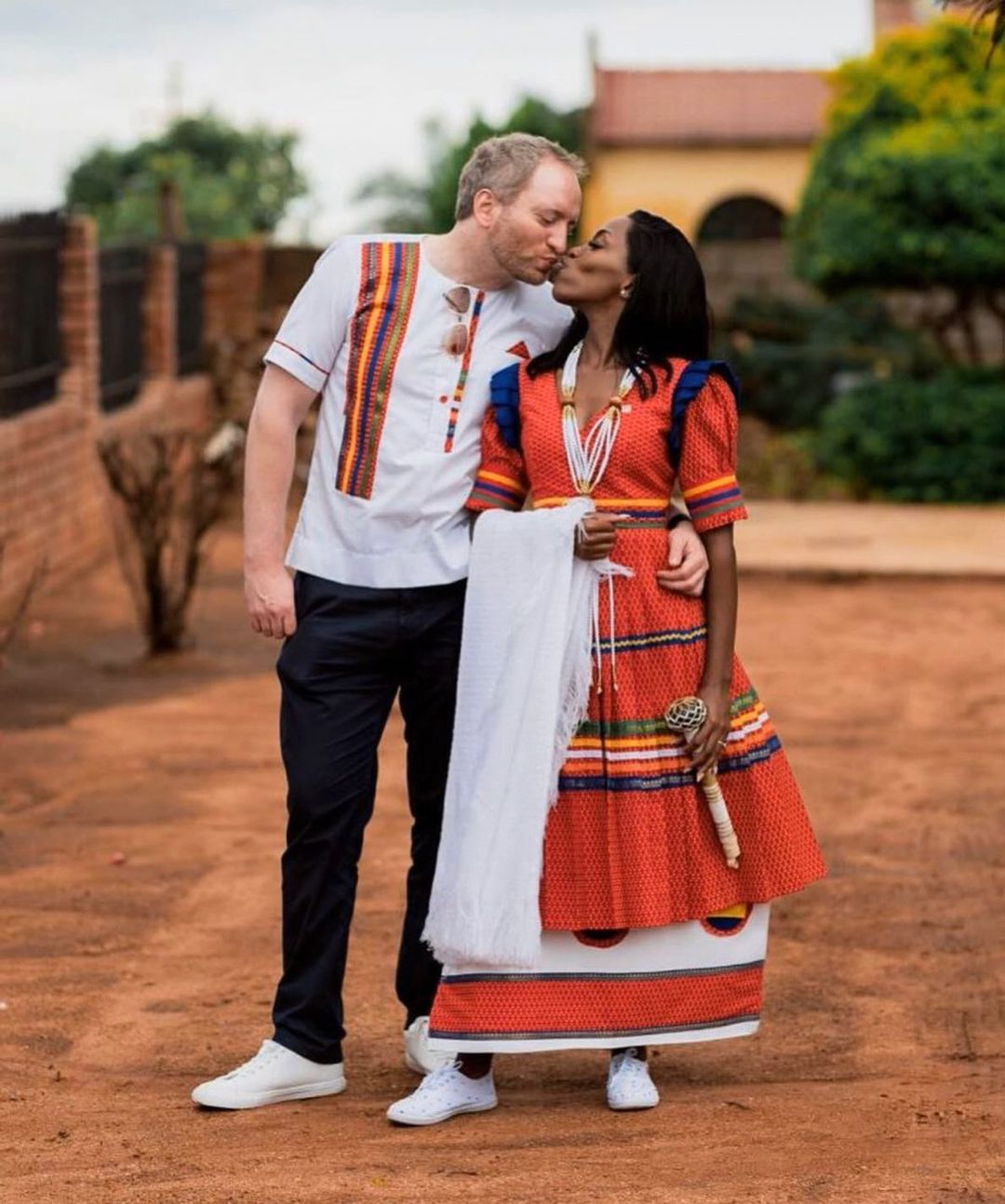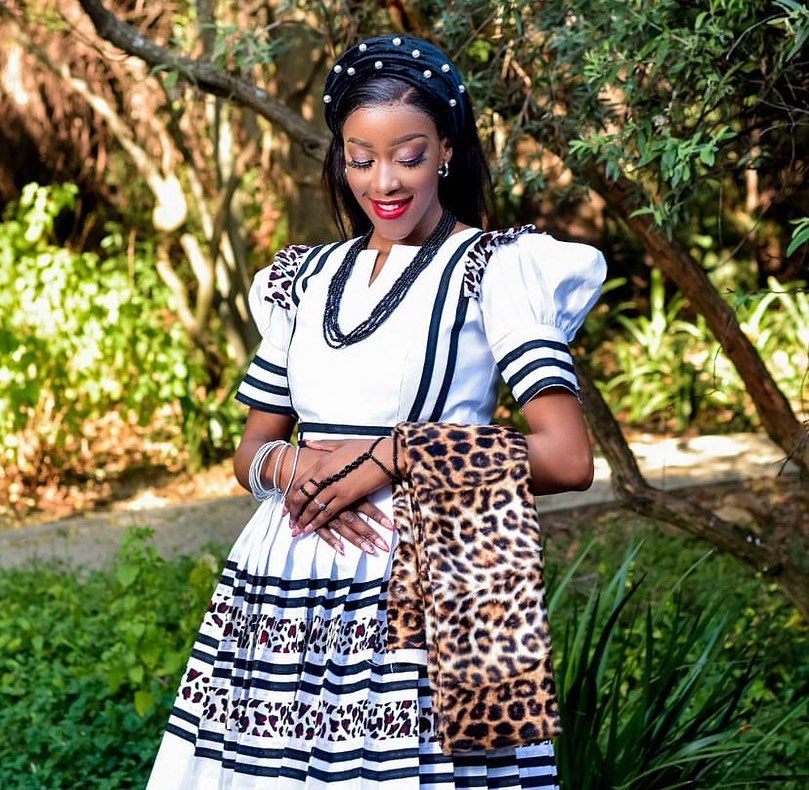
The Sepedi (or Bapedi) people are renowned for their rich traditions and deep ancestral connections in South Africa. Central to their cultural expression is the Sepedi traditional wedding dress, a garment that transcends mere fashion to become a symbol of history, identity, and the beauty of Sepedi culture.
Kele+ explores the essence of these traditional wedding dresses, their historical roots, key elements, and what modern brides should know.
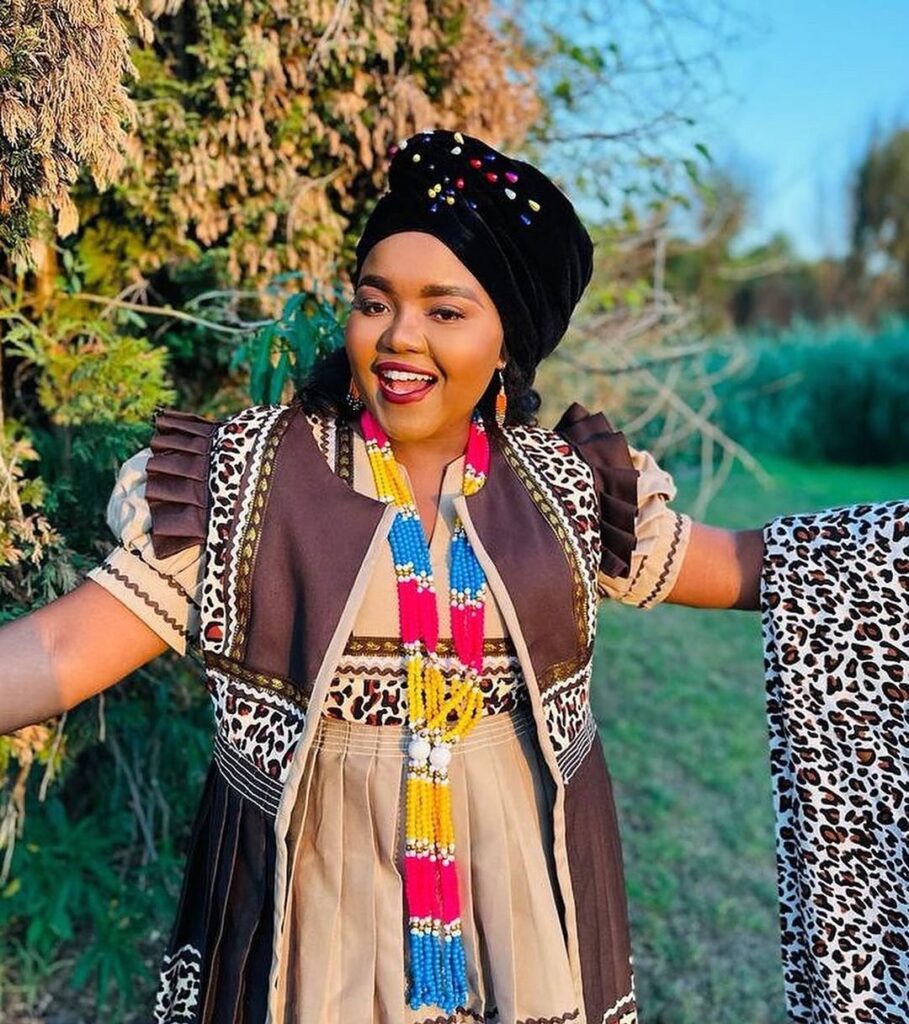
Tracing back to the Sotho-Tswana groups, the Sepedi people have a long-standing heritage in Southern Africa. Traditional clothing, evolving from garments made of animal hides, cotton, and plant fibres, has transformed over the centuries, influenced by interactions with various cultures.
Today’s Sepedi wedding dresses are a testament to this rich history, blending traditional craftsmanship with contemporary styles.
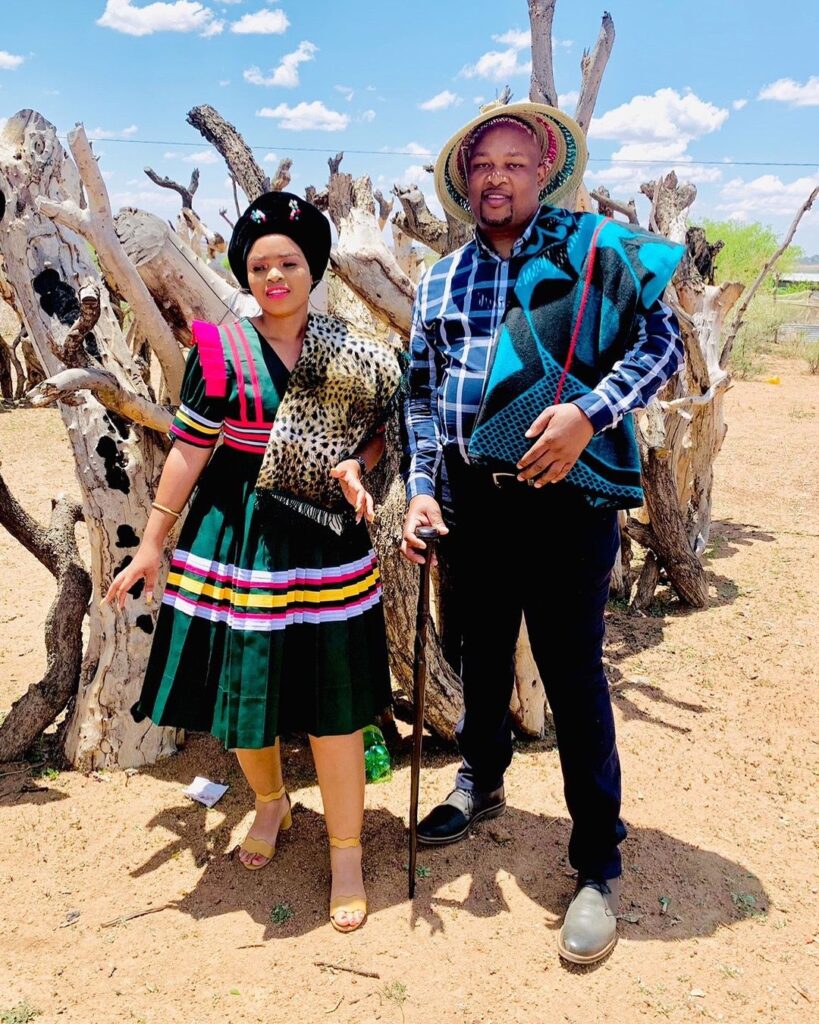
A distinctive feature is the mokgibo or mosokotso, an adorned headpiece resembling a turban-like gele. Decorated with beadwork, embroidery, or shells, this headpiece holds great significance, marking the bride's marital status and transition into adulthood.
The dipheta, a shawl draped around the bride's shoulders, is typically made of luxurious fabrics like satin or silk in bright colours. It serves both aesthetic and practical purposes, adding elegance and warmth.
The use of vibrant Shweshwe fabric in wedding dresses is a hallmark of Sepedi attire. Known for its bold patterns and colours, this fabric reflects the couple’s style and taste.
The ensemble is often complemented with jewellery like necklaces, bracelets, and earrings, crafted from precious metals and adorned with beads and gemstones.
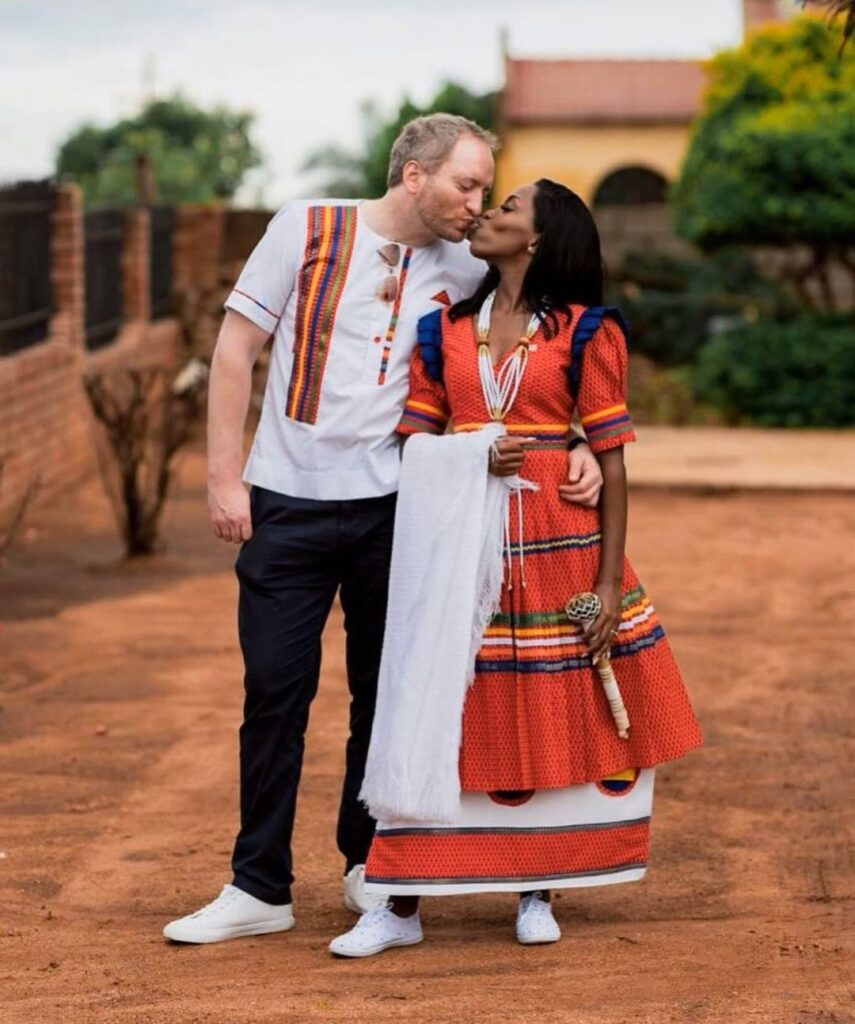
Sepedi wedding dresses have some cultural symbolism:
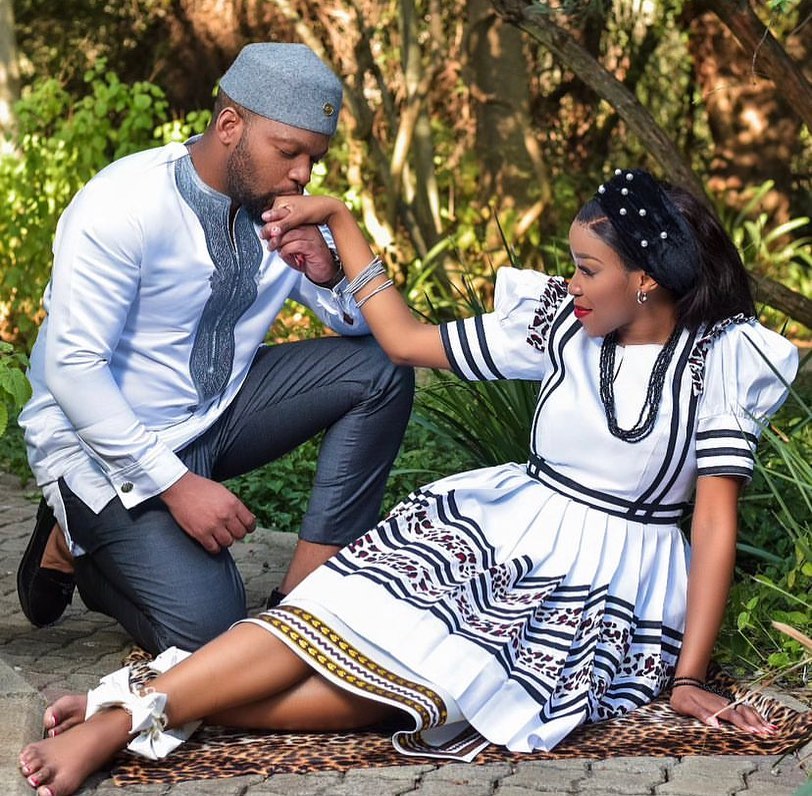
Contemporary Sepedi brides are embracing modern twists in their traditional attire, blending time-honoured designs with current fashion trends.
More than ever, personal style is key. Brides are encouraged to infuse personal elements into their traditional attire, making each outfit unique.
There's a growing trend towards sustainable fashion, with brides opting for eco-friendly fabrics and locally sourced materials.
With the digital age, finding the perfect Sepedi wedding dress has become easier. Brides can explore online platforms and social media for inspiration and designers.
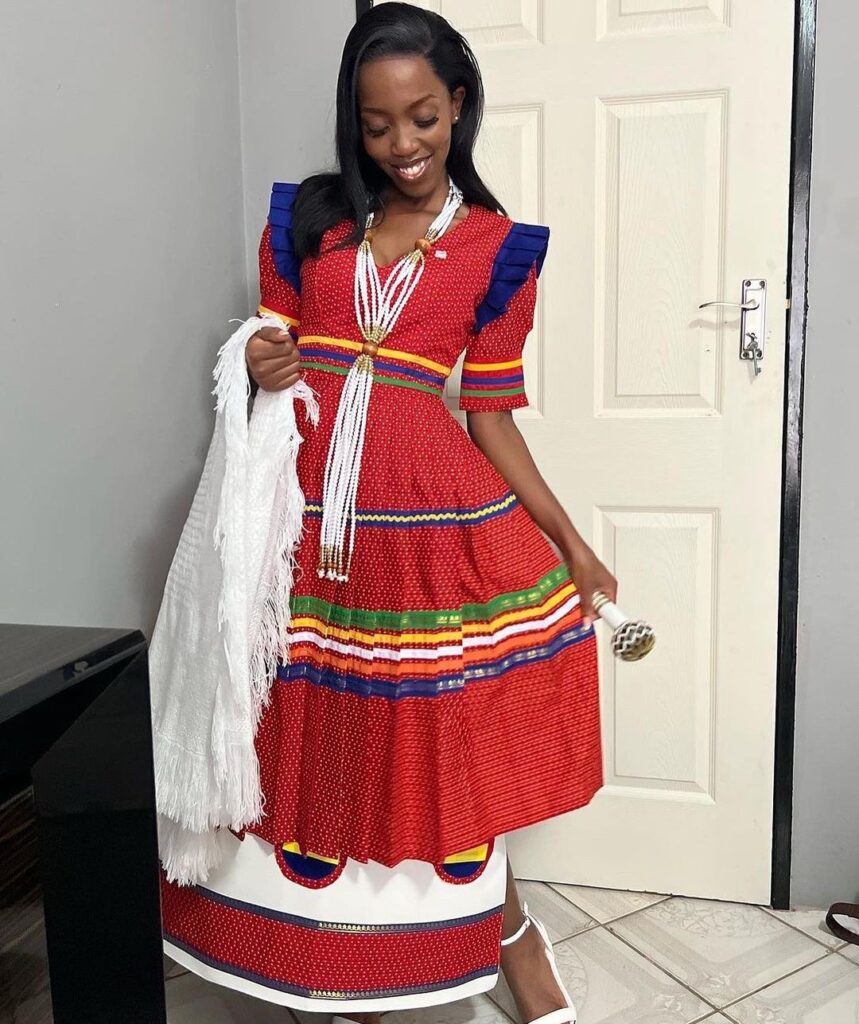
The Sepedi traditional wedding dress stands out for its vibrant hues, intricate beadwork, and deep cultural significance. For brides-to-be planning to honour their Sepedi heritage, choosing the right traditional wedding dress is a journey that intertwines personal style with cultural respect. Here are five crucial factors to consider when selecting your Sepedi traditional wedding dress, ensuring a harmonious blend of tradition and individuality.
Before delving into fabrics and designs, it's essential to grasp the cultural importance of Sepedi wedding attire. Each element, from the brightly coloured Shweshwe fabric to the adorned headpiece (mokgibo or mosokotso), carries a wealth of tradition and meaning.
Recognize that in wearing this dress, you're partaking in a ritual that celebrates your heritage and honours your ancestors. A deep appreciation of these elements will guide you in making respectful and informed choices.
The beauty of traditional wedding dresses lies in their ability to evolve with time while retaining their essence. As a modern bride, look for ways to incorporate contemporary fashion trends into your Sepedi dress. This could mean experimenting with different cuts, combining fabrics, or adding unique accessories that resonate with your personal style. Collaborating with a designer who specialises in traditional Sepedi attire can help you strike this balance.
The fabric and colour of your dress are central to its overall impact. Traditional Sepedi dresses often feature the iconic Shweshwe fabric, known for its durability and distinctive prints. When selecting the fabric, consider its quality and how its colours and patterns align with traditional designs. Remember, colours in Sepedi attire are not just aesthetic choices; they often hold symbolic meanings, such as red symbolising love and fertility.
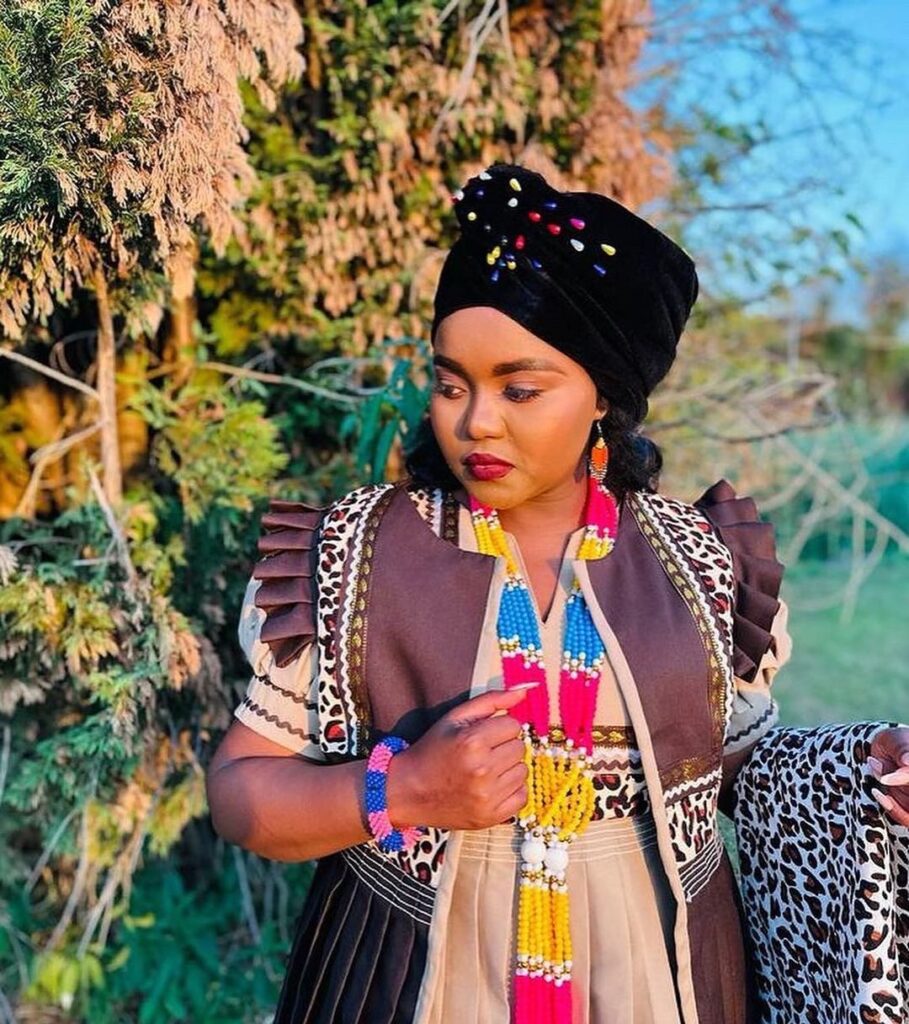
Your wedding day is a celebration, and comfort is key to enjoying it fully. Traditional Sepedi dresses, adorned with beadwork and elaborate designs, can be quite heavy. Ensure that your dress is tailored to fit you perfectly, allowing ease of movement, especially if you plan to participate in traditional dances. Also, consider the weather and venue of your wedding when selecting the fabric and design of your dress.
Accessories can make or break your bridal look. Traditional Sepedi bridal attire is often complemented with beaded jewellery, headpieces, and sometimes a shawl (dipheta). Choose accessories that not only enhance your dress but also hold cultural significance. However, be careful not to over-accessorize; the goal is to accentuate your dress and not overshadow it.
These points highlight things brides need to know about wearing Sepedi traditional wedding dresses for their big day. Although not exhaustive, these pointers are sure to lead you to start your wedding fashion right and Kele+ wishes to see some photos of your enchanting self on your big day - and hopefully share them.

